Exterior Home Inspections
Patios
When your poorly draining concrete patio or pool deck gets flooded after a heavy rain, it not only prevents you from enjoying your outdoor activities but it can also cause moisture to seep into your basement if the water settles near the house.
Improper Slope
If your patio is totally flat with areas where water collects, it should be reworked to slope slightly, funneling water off the surface and away from the building.
Clogged Drainage System
You may have a clogged drainage system if your patio once drained well but now appears to trap water. Debris can accumulate in drains, clogging them over time.
Roof Overhangs and Downspouts
Rainwater pooling on your patio from a roof overhang or broken downspout can be remedied by installing a proper gutter system and redirecting downspouts away from the patio.
Walkways
Trip hazards are common and dangerous defects in the sidewalk. These are any irregularity that creates a half-inch (or more) change in elevation or a three-quarter-inch horizontal gap, including edges, joint seams, expansion joints, cracks, and faults.
Other problems are holes greater than one inch in diameter and concrete blocks or bricks that have lifted.
Level and non skid, high-traction surfaces, such as broom-finished concrete or paver-grade brick, are necessary. Correct grading will prevent water from accumulating.
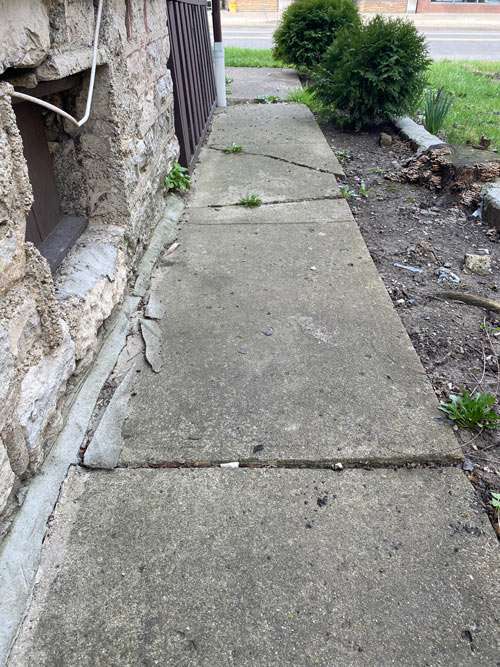
Trip Hazards—Potential Lawsuits
What is a Trip and Fall?
Trip-and-fall lawsuits are when a person trips on an object, resulting in a fall to the ground. A slip-and-fall lawsuit is where the person slips on a surface and falls.
Property owners can be liable for injuries that occur on their property, especially if the danger was known to the owner at the time of the accident.
Dangers can include:
Driveways
Over time, cracks can develop in your concrete or asphalt driveway. Gas, oil, de-icing salt, and other substances can seep through the driveway surface, worsening the cracks. In areas with freezing temperatures in winter, water can seep into the cracks and expand when it freezes.
Some minor cracks may be fixed, but long, wide, or deep fractures can indicate more severe damage. You may need to replace your driveway if larger cracks cannot be fixed. When patching your driveway, be aware that repaired areas will likely appear darker than the surrounding pavement, reducing its visual appeal.
Water has little effect on a well-maintained driveway. But any drainage issues can lead to serious damage. Water can pool in an uneven or poorly sloped surface, gradually weakening it and causing cracks and potholes.
Repair solutions can include curbing or inlets to direct water off the driveway. A badly damaged driveway may need to be replaced before installing these features.
Porch
Your porch may be a concrete slab that has deteriorated over time. The stairs may have settled and sagged. Perhaps there are problems with your foundation. Some issues to look out for include:
- Cracks between the stairs and the house
- Steps pulling away from the house
- Steps pulling away from the porch
- Poorly sloping surfaces
- Cracks in concrete slabs
Faults in your porch or stairs can mean your foundation is damaged. While it is important to repair your porch, repairs to your foundation are crucial. The longer you leave it, the more money and time it will take to fix.
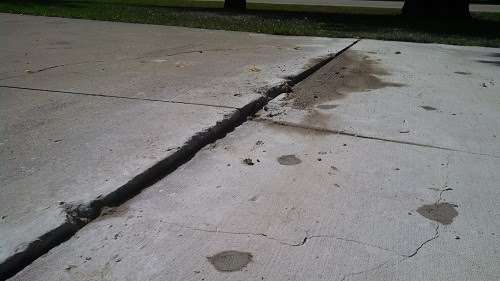
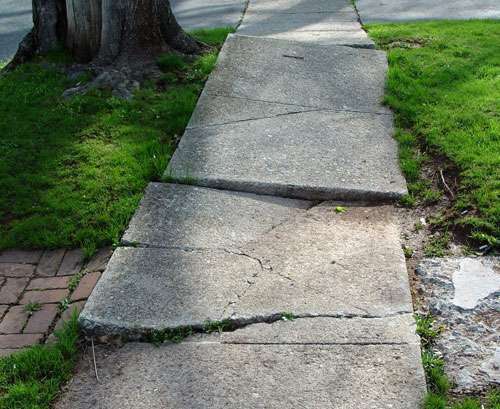
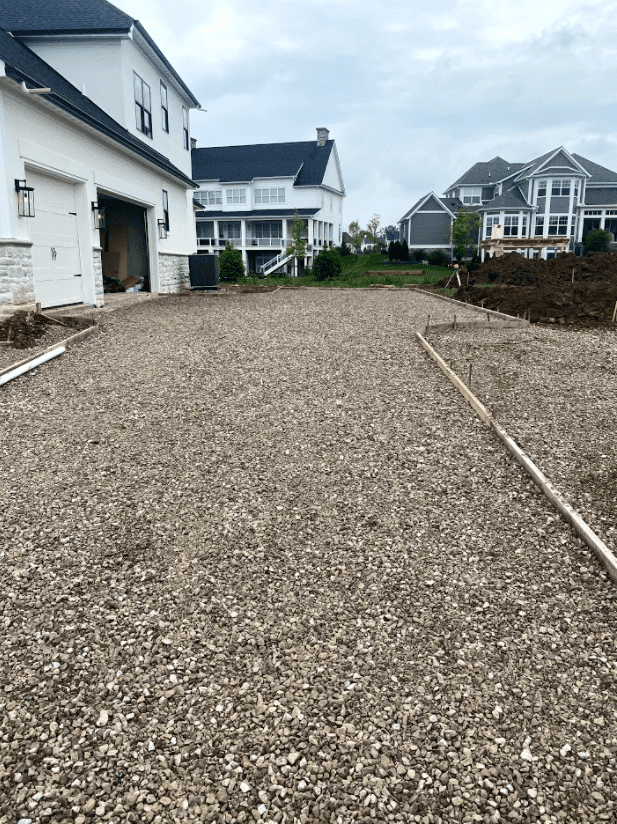
Settlement
What is Settlement?
Settlement is the downward movement of the ground caused by a load. Most buildings settle over time, and it usually happens within the first few years after completion. Ongoing building settlement is not normal. Settlement can be affected by significant changes in drainage, extreme weather events, or other external factors.
Uniform Settlement
Uniform settlement means the entire foundation settles at a constant rate with little or no cracking.
Differential Settlement
Differential settlement means non-uniform movement of the underlying soils, often resulting in cracks in the foundation, exterior cladding, and interior finishes. Piers in a pier-and-beam foundation may settle at varying rates, producing a different result to a slab foundation.
Typical Causes of Settlement
- Weak supporting soils
- Extending an existing house
- Improperly backfilled or poorly compacted soils
- Irregular weather patterns—excessive rainfall or drought
- Poor drainage
- Fluctuations in the groundwater table
- Disturbance from mature trees close to the house
- Leaky plumbing or swimming pool
- Extracting oil or water from the ground nearby
How Do You Know If Your House Has Experienced Settlement?
Evidence of settlement can be seen with
Exterior Cracking
These may be vertical cracks in poured foundations or stair-step cracks in brick or CMU walls. Exterior wall cracks usually start at ground level. Larger cracks can indicate ongoing settlement.
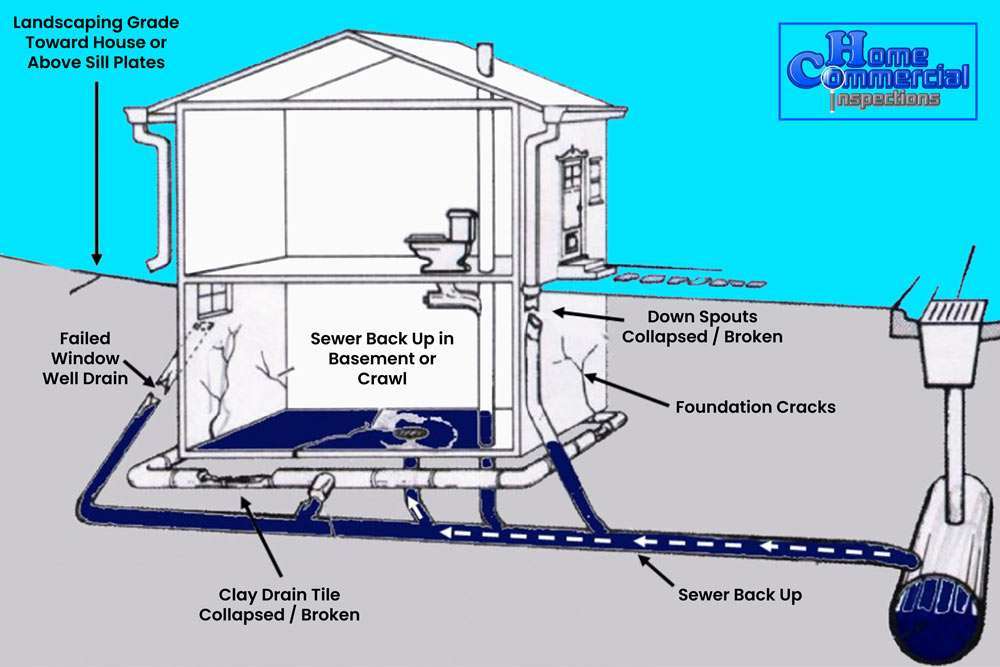
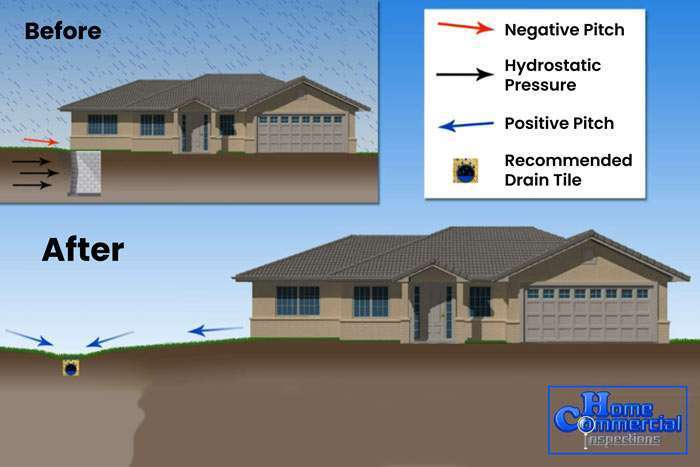
Interior Cracking
These may be semi-horizontal or angled cracks usually found at the corners of windows and doors where any shift in the foundation causes the building the most stress. Heaving—the upward movement of soil—can also cause these cracks.
Sagging Floors
Houses built with a pier-and-beam foundation system can display sagging floors when the piers settle at different rates.
Sticking Windows and Doors
If your windows and doors are hard to open, it may be a sign of settlement. Scrape marks on the floor or the door jamb or a misaligned latch are telltale signs.
How Do You Repair and/or Stop Settlement?
Helical Piers
Helical piers jack up the footings of your house. Spaced every five feet or so, they are driven into the ground to reach sound soil or bedrock.
Slab Leveling
Mud jacking (flowable concrete) or polyurethane foam can be used to level a settled foundation slab. These flowable fills are pumped through holes drilled in the slab. The slab is raised, and the soil is consolidated, preventing future settlement. While polyurethane foam can be the more expensive of the two, it is typically stronger, lasts longer, and does not retain moisture, and the slab can be used sooner.
Retaining Walls
Soil can compress or subside under the weight of a retaining wall, reducing the wall’s height. If the height lowers too much, the wall will fail because there is no longer adequate pressure to hold it up.
Poor Drainage
Saturated soil behind the structure is a frequent cause of retaining wall failure. When water saturates the soil or backfill, pressure on the wall is dramatically increased, becoming a significant issue for walls not designed to handle the increased weight.
Exterior Grade
What is Grading?
The level of the ground around your house is called the grade or grading. The flow of stormwater around your property depends on how the ground level is graded.
Positive and Negative Grading
Positive grading slopes away from your home and directs water away from your foundation. Negative grading slopes toward your home and directs water toward your foundation. Over time, negative grading can cause significant damage to your house.
How Do I Know My Property’s Grading?
If you are buying a house, be sure to undertake a home inspection first—this will check for negative grading. Regularly monitor your gutters, downspouts, and watch for water flow after heavy rain. If water collects near the house, you may need to correct the grading. If you install a new flower bed, patio, or path, be conscious of the grade and how any alterations may affect the water flow.
How Do I Repair Negative Grading?
Repairing negative grading may be as simple as building up the soil around your house. Do not cover your existing siding—this can cause other problems, such as encouraging termites. The soil must be dense and slope away from the house to divert water away from the walls. Use topsoil or grading soil, which holds the water at grade level until it has a chance to seep away. Do not use sand; water flows easily through sand and can make the situation worse.
Grading and Water Penetration
Most water penetration problems are due to poorly managed surface water. The worst areas are usually found near gutters and downspouts, window wells, and exterior steps.
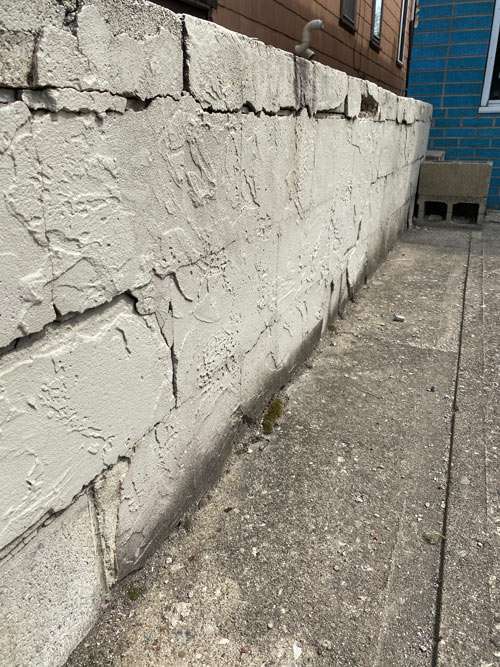
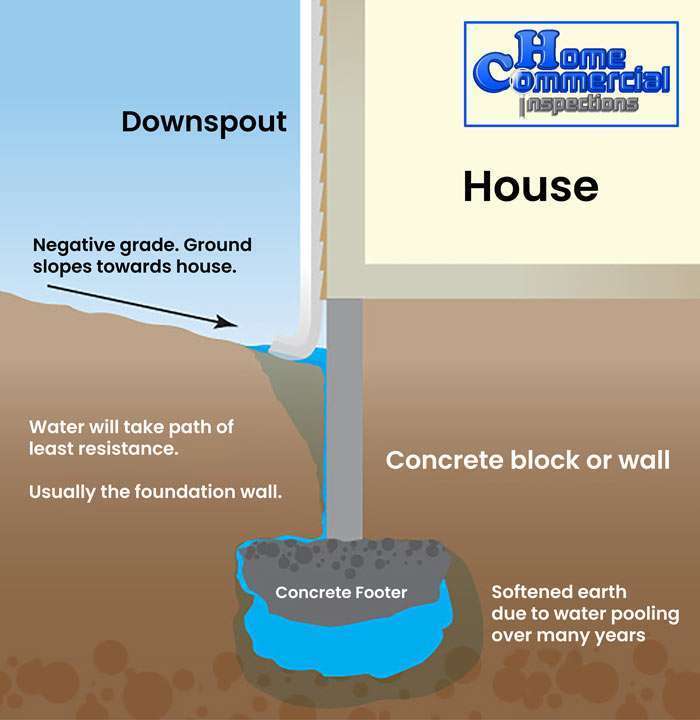
Well
A residential well can produce many years of water with little or no maintenance. However, you’ll avoid significant problems with your tank and water pressure if you routinely service and maintain your well.
Septic
Signs of septic system failure are:
- Water and sewage from toilets, drains, and sinks backing up into the home
- Slow-draining baths, showers, and sinks
- Gurgling sounds in the pipes
- Pooling water, damp spots, bad smells, or bright-green, lush grass (even in dry weather) near the septic tank or drain field
- Nearby ponds or lakes show signs of algae
- Water wells indicate high levels of nitrates or coliform bacteria
Septic systems require routine maintenance to ensure long-term reliable service. If not, systems failures can be dangerous and costly. All septic systems have a limited lifespan and will eventually need to be replaced.
Septic system failure is a risk to human, animal, and environmental health. Be alert to signs of failure, regardless of the age of the system, and respond immediately to any anomalies. A quick response will save you money in repairs and prevent illness and environmental pollution.
There are many reasons a septic system can fail or malfunction. If your system isn't working properly, contact a septic professional.
What Happens When a Septic System Fails?
In a failed system, untreated sewage can leak or spread, coming to the surface of the ground around the tank or the drain field or backing up through pipes into the building. Sewage can leak into groundwater, surface water, or marine water, carrying pathogens and other dangerous contaminants and causing illness in people, aquatic life, and animals. Contaminated water is unsafe for drinking, swimming in, harvesting shellfish from, or agricultural use, and it may leach to your neighbor’s wells.
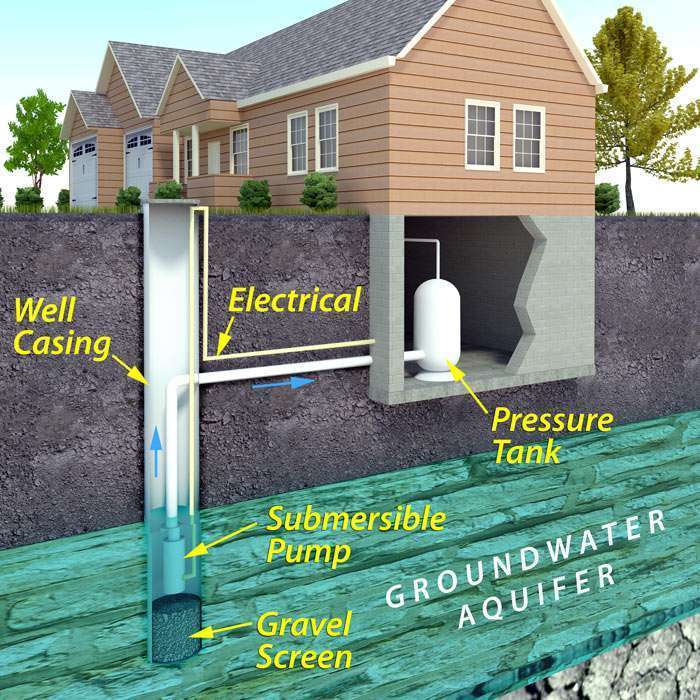
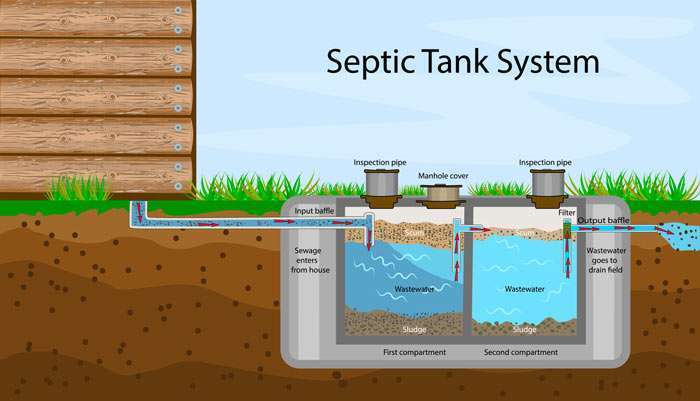
What Are Some Common Reasons a Septic System Doesn’t Work Properly?
Blocked Pipes
Pipes drain very slowly or stop draining completely. This can be fixed by a specialist cleaner “snaking the line” to unclog it. Prevent clogged pipes by only flushing human waste and toilet paper and have your system inspected annually. Pipes may be crushed or broken by vehicles or animal traffic, and plant roots can block pipes. In these cases, the pipe will need to be replaced.
Blocked Baffle Inlet to Tank
You can check for a clog if you have access to your inlet baffle opening. Unclog toilet paper and other debris using a pole (without damaging any system components), or contact a service professional to help. Prevent clogging by only flushing human waste and toilet paper and have your system inspected annually.
Clogged Outlet Baffle or Effluent Filter
If sewage is backing up into the home or surfacing near the septic tank, you may have a clogged outlet. The tank could be receiving too much water in a short time. The effluent filter must be cleaned off or replaced. If there is no effluent filter, you may need the tank pumped to identify and remove the clog. Prevent clogging by cleaning your effluent filter (if you have one) and have your system inspected annually.
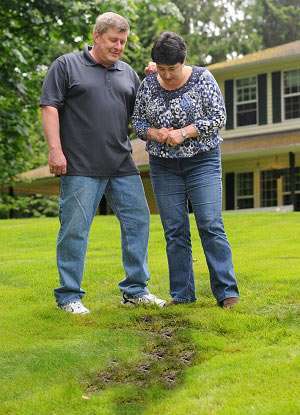
Drain Field Has Failed
Sewage may back up into the home if the drain field fails or is saturated with water. Indicators include wet and soggy areas, spongy bright-green grass, and odors near the tank or drain field. The component may have reached capacity, be at the end of its life, or have been operated inappropriately and needs to be replaced. Alternatively, you may be able to dry and rehabilitate the drain field. If the drain field has failed, consider a connection to the public sewer system. A service professional can assess the situation.
How Can I Prevent a Failure?
The best prevention is routine maintenance and proper operation. If your septic system has been properly designed, sited, and installed, it is up to you to keep it working properly. Inspect annually and pump as needed (usually every three to five years). Avoid excess water use, and be conscious of what is put down the drain or flushed down the toilet.
Sewer Line
Sewer lines are critical to your plumbing system, yet we pay little attention to them until a major problem occurs. Clogged and broken sewer lines cause significant damage in a short time, including contaminated water backing up into your toilets and sinks and dangerous mold and bacterial growth.
Toilet Backups
Occasional clogging can be caused by too much paper; however, pay serious attention to clogging if it happens regularly. Large clogs in sewer lines can build up over a long time, especially when people put items down the drain that don’t belong there, such as feminine hygiene products and flushable wipes.
Slow Draining Tubs and Sinks
Bathtubs and sinks also develop clogs. Use strainers in the upper drains to keep hair, food debris, and other material from going into the pipes. If a drain runs slowly, remove the clog to prevent flooding in the house.
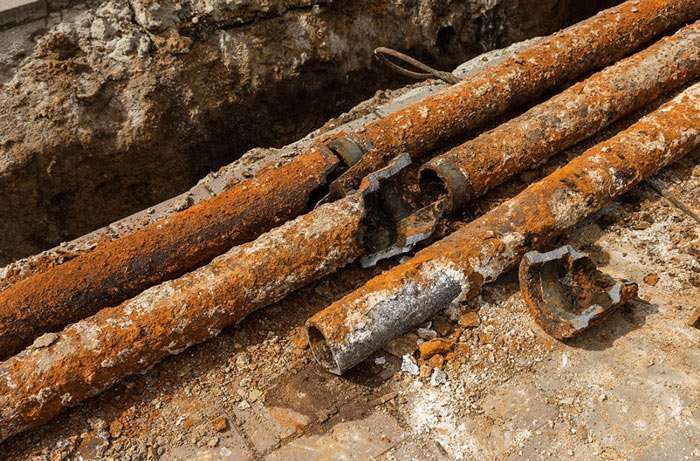
Foul Odors
Sewage backups often contain contaminated waste and decaying organic matter, which emit a foul odor. New and unpleasant odors while showering or washing up could indicate a major problem with the sewer lines.
Lush Growth on the Lawn
Investigate any areas on the lawn that show rapid grass growth. It could mean a broken sewer line has leaked water into the surrounding area, containing fertilizing organic materials. Soggy grass can also point to a plumbing leak or crack in the pipes.
Pest Problems
Cockroaches and other insects can use small cracks in the pipes to migrate into your home. You might see roaches come up through the pipes or notice more bugs inside your property.
Mold and Mildew
Sewer lines travel through the walls of your home and may run through the ceiling in a multistory building. Cracks in pipes can cause water leaks, which then appear as wet, moldy, mildewy patches.
Gurgling Sounds
Gurgling or bubbling sounds can point to a problem with water flow. Tree roots may be growing into your drain pipes—common in buildings with clay or concrete sewer lines. Repair or replace these pipes with newer materials to prevent major breaks and nasty clogs.
Storm Drains
Signs That Your Storm Drain Is Failing
Storm drains prevent flooding from rainstorms. If your storm drains are beginning to fail, prioritize cleaning and repair to avoid major issues.
Symptoms of storm drain failure can range from water trickling slowly into drain gutters to water pooling to sinkholes, causing serious damage to roads, utilities, and properties.
Storm Drain Failure
Clogged catch basins and material filling up pipes can cause storm drain failure.
Catch basins can fill up with leaves, dirt, sticks, and other debris and objects that fall into the drain and block or fill up the pipe.
When storm drains are blocked, the added volume of water means standing water will spread across the area. Many storm drain basins are not cleaned for years, so this is a common problem. Routine maintenance and drain pipe inspections can resolve this issue.
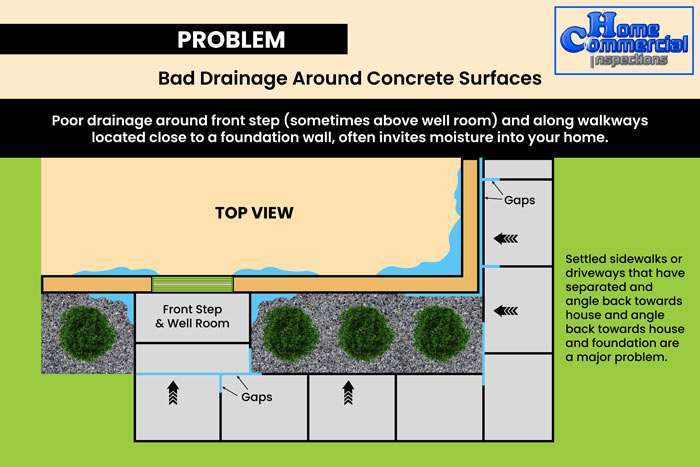
Drain pipes are commonly made from corrugated steel and concrete. Corrugated steel pipes can corrode over time—chemicals inside the pipes eat away at the metal until it erodes and ultimately cracks and leaks.
Concrete pipes do not have these corrosion problems, but they can still crack and leak. Concrete is a very heavy material, and the joints must be sealed with rubber gaskets or concrete—those areas are most prone to leakages. Concrete pipes often require maintenance to reseal these joints.
